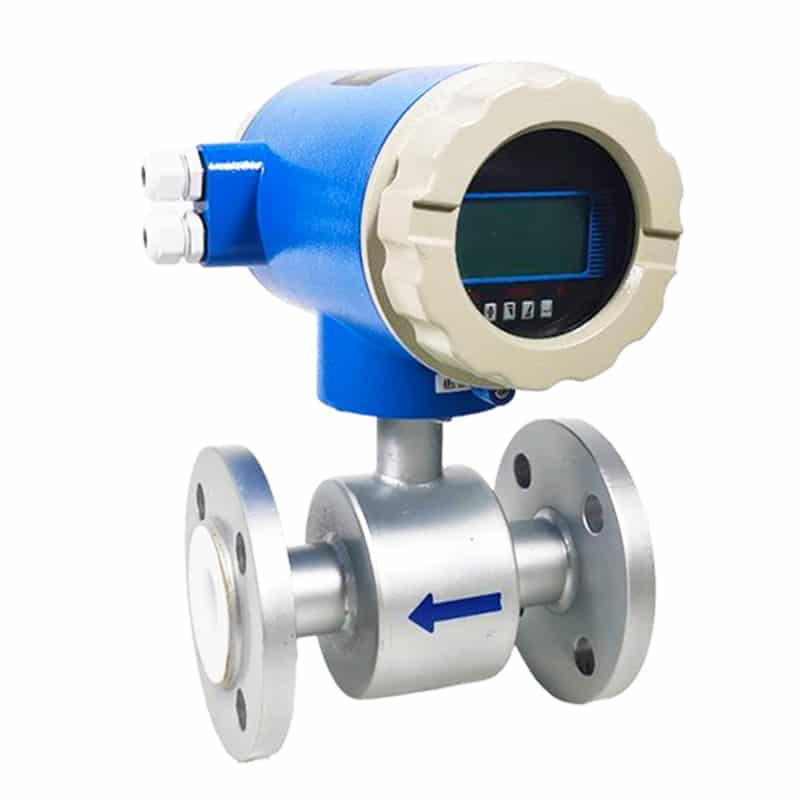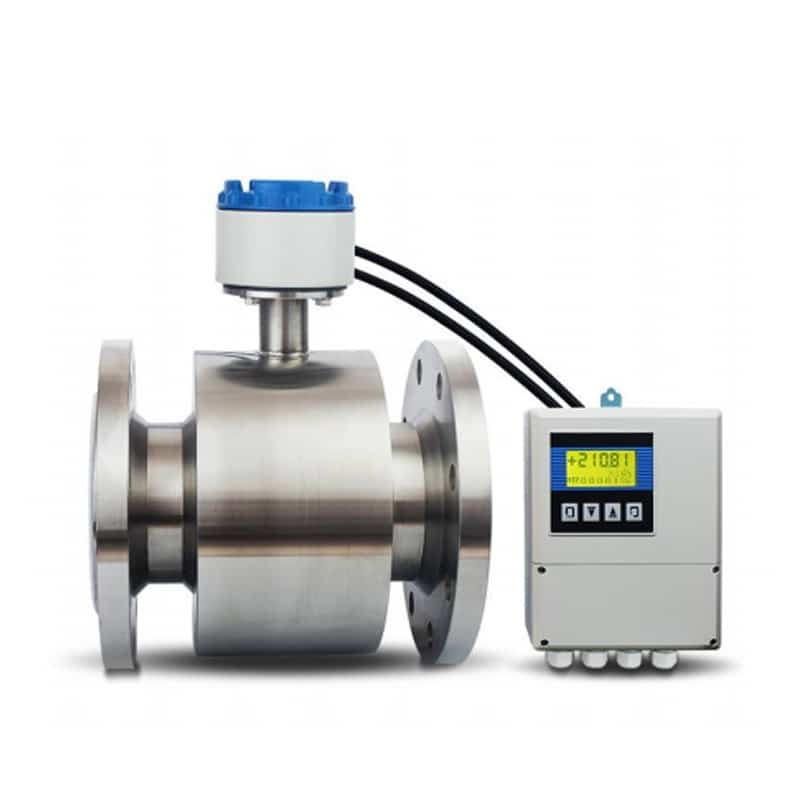Water flow meters are required by national water agencies for new and existing agricultural irrigation applications to measure and manage surface water and groundwater use. There is a growing need to conserve resources and balance the water needs of agriculture with other industries, and as the population continues to grow, residential use is driving water conservation in unprecedented ways.
Irrigation scheduling is the process irrigators use to determine the correct frequency and duration of watering. It involves understanding, applying and then monitoring and controlling the necessary instruments such as soil moisture sensors, rain gauges and flow meters to ensure efficient water use in crop production. This minimizes water waste and supports water conservation while maximizing crop health and yield. Good irrigation planning practices include knowing how much water is used in each field. A properly selected and installed flow meter accurately measures the amount of water applied. Accurate flow meters are an important tool for implementing a good irrigation program.
The two most common types of irrigation flow meters are electromagnetic meters and propeller meters. Propeller meters are mechanical flow meters that have been around in irrigation since 1919 and therefore make up a large portion of the installed base of irrigation water meters. Fifteen years ago, many people thought that propeller meters were the best meter choice for irrigation – that is not the case today. Expensive propeller meter repairs have led many meter users to look for other flow measurement options. With advances in technology, electromagnetic flowmeters are now available for battery power at remote irrigation locations. Many have long battery life, high accuracy in tight spaces, and no moving parts to wear out; they are unaffected by debris. Some electromagnetic flow meters are similar in price to mechanical propeller flow meters.
Use the following 4 tips to help select the right flow meter for irrigation.
What is the application?
Knowledge of the fluid medium, flow range, temperature, pressure, line size, desired signal output and available installation space are all necessary to ensure proper flow meter selection.
- What is the application? Is it groundwater, surface water, pond water or manure slurry lagoon water? While mechanical meters may be suitable for clear water applications where the flow range is within the meter’s capability, electromagnetic meters offer the highest accuracy and performance in both clear and dirty water applications. With no moving parts, weeds, trash and mud may become entangled in the mechanical meter and easily flow through the magnetic meter.
- What are the minimum and maximum flow ranges? When selecting a mechanical propeller flow meter, it is critical to know the minimum and maximum flow ranges. A propeller flow meter requires a minimum flow rate to allow the bearing assembly and propeller to turn fast enough to ensure accurate readings. If the flow rate exceeds the mechanical meter’s rating, the bearing assembly can suffer costly damage and the meter will not function properly. Because there are no moving parts to wear, electromagnetic flowmeters provide higher accuracy over a wider flow range than mechanical meters.
- What are the temperatures and pressures? Most flowmeters offered for this market are rated to operate at temperatures up to 150 psi and 140 F. Most of these applications fall within that temperature and pressure range. However, it is always wise to confirm the application temperature and pressure.
- What is the size of the line? This will help determine the style of meter. Both electromagnetic and mechanical gauges are available in full bore and plug-in configurations. For cost and ease of installation, the plug-in style may be the best choice for larger line sizes.
- Does the meter require a signal output? Some applications require the instrument to send signals such as pulses, 4-20mA, or Modbus. In some cases, the output is used to send a signal to a remote telemetry system, allowing the irrigator to collect meter data remotely. Signal outputs on propeller flow meters are optional and usually require the added cost of a transmitter or special digital register that can provide the output. Most electromagnetic flow meters have pulse signal output as a standard feature, making them “telemetry system ready” and can provide Modbus or 4-20mA output signals for a small additional cost.
- Installing a flow meter requires sufficient straight pipe length for accurate measurement, which can be costly in materials and labor. Mechanical propeller meters need longer straight runs, making installation challenging in tight spaces. Straightening vanes or rectifiers can reduce this requirement but add to the cost. In contrast, full-bore electromagnetic flow meters are more compact and provide accurate measurements even in limited spaces, making them a better fit for retrofits and confined areas.
Why use an irrigation flow meter?
Irrigation flow meters are used to accurately measure water flow to ensure efficient water management, optimize agricultural production, reduce waste and comply with irrigation regulatory requirements.
How important is accuracy?
In general, electromagnetic meters are more accurate than mechanical meters. Most electromagnetic flow meters for irrigation provide +/-1% flow over a wide range of flow rates with no head loss. The most common mechanical meter used in irrigation is the propeller flow meter. Propeller meters typically provide +/-2% accuracy over a specified flow range and should experience some head loss. Because there are no moving parts to wear, electromagnetic meters can maintain accuracy throughout the life of the meter.
What is your meter maintenance schedule?
As with most farm equipment, all irrigation flow meters require attention at some point.
- Mechanical propeller meters have moving parts, such as propellers, bearings and mechanical registers, that can wear out, causing interruptions in measurement data and leading to costly repairs. The number of parts for mechanical gauges has increased dramatically over the years, and the cost to repair a part is almost as high as the cost to replace it. The standard warranty on most mechanical propeller gauges is one year.
- Electromagnetic meters do not have any breakable moving parts and maintenance is usually limited to replacing the batteries. Many battery-powered electromagnetic flowmeters now offer a 5-year battery life, and the cost of battery replacement is a fraction of the cost associated with typical mechanical meter repairs. In addition, most electromagnetic flowmeters come standard with a two- to five-year warranty, depending on the brand.
Electromagnetic or mechanical?
Electromagnetic flow meters, or mag meters, operate based on Faraday’s Law—when a conductive fluid (e.g., irrigation water) flows through a magnetic field, it generates a voltage. The faster the flow, the higher the voltage, which is measured by electrodes and displayed as flow rate and total volume.
Traditionally used in municipal and industrial water applications, mag meters have advanced significantly over the past 15 years, making battery-powered models ideal for irrigation. They often cost less than mechanical propeller meters while providing higher accuracy, no moving parts, and minimal maintenance.
Compared to propeller meters, mag meters require less straight pipe, have longer warranties, and offer features like pulse output, digital readout, and data logging as standard. They are also available in saddle insert designs, making them easy to install in new or retrofit applications. Overall, mag meters deliver durability, efficiency, and cost savings for modern water measurement needs.
- Mechanical propeller meters, also known as propeller flow meters, measure flow using a rotating propeller inside the pipe. As water flows through, it spins the propeller at a speed proportional to the flow velocity. This motion is transmitted via a gear or drive cable to the meter head, where the instantaneous and total flow rates are displayed on a mechanical or digital register.
- Available in saddle, flange, threaded, and grooved configurations, propeller meters offer easy installation and a cost-effective solution for applications requiring basic flow measurement. They perform well in clean water systems, but debris can damage the moving parts. While once the most affordable option for irrigation, newer electromagnetic flow meters now provide a more cost-effective and low-maintenance alternative.
Summary
Apure is a designer and manufacturer of a wide range of flow metering, field instrumentation and process analyzer products. Since 2007, we have been providing innovative solutions for users in irrigation, water treatment, groundwater, surface water and chemical processing applications. Our products have a reputation for durability and accuracy at competitive prices and are sold through a network of domestic and international distributors. We employ just-in-time manufacturing methods and are highly committed to continuous improvement. Our focus on innovation, product value and customer accessibility has led to nearly two decades of consistent growth. Feel free to contact us for technical, quotation or distributor support.
More articles on flowmeters:
Difference between flow meter and flow transmitter
Flow meter calibration
Useful information about flow units
Mass flow rate vs volumetric flow rate



